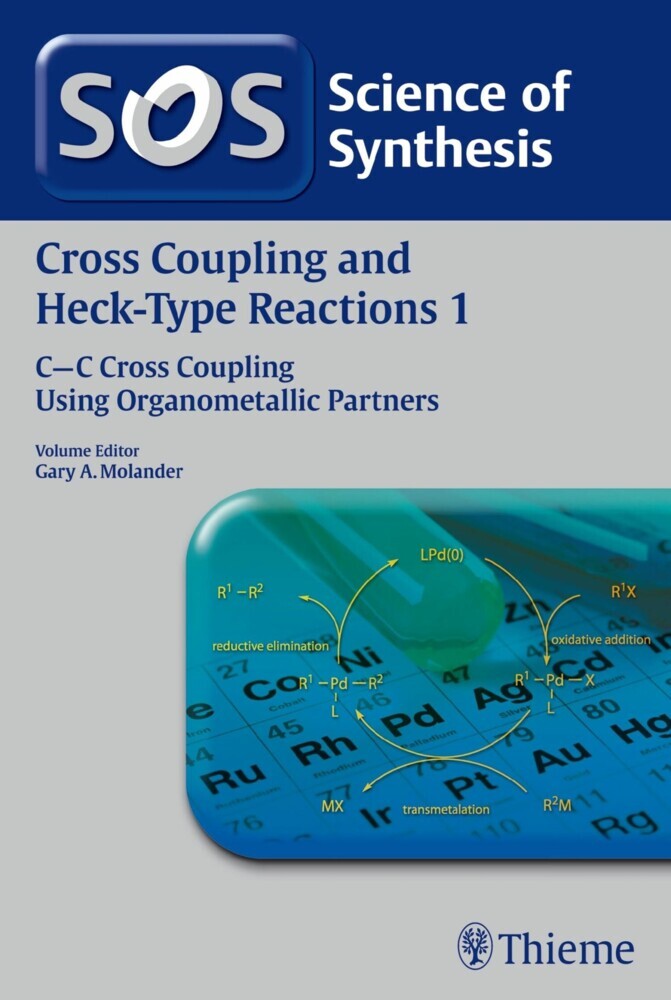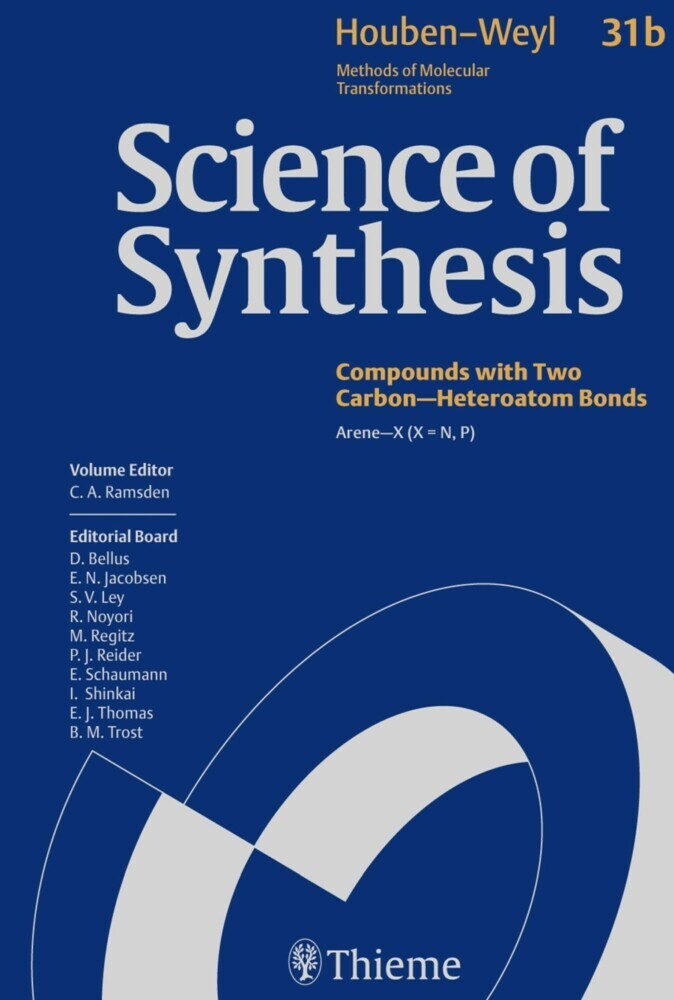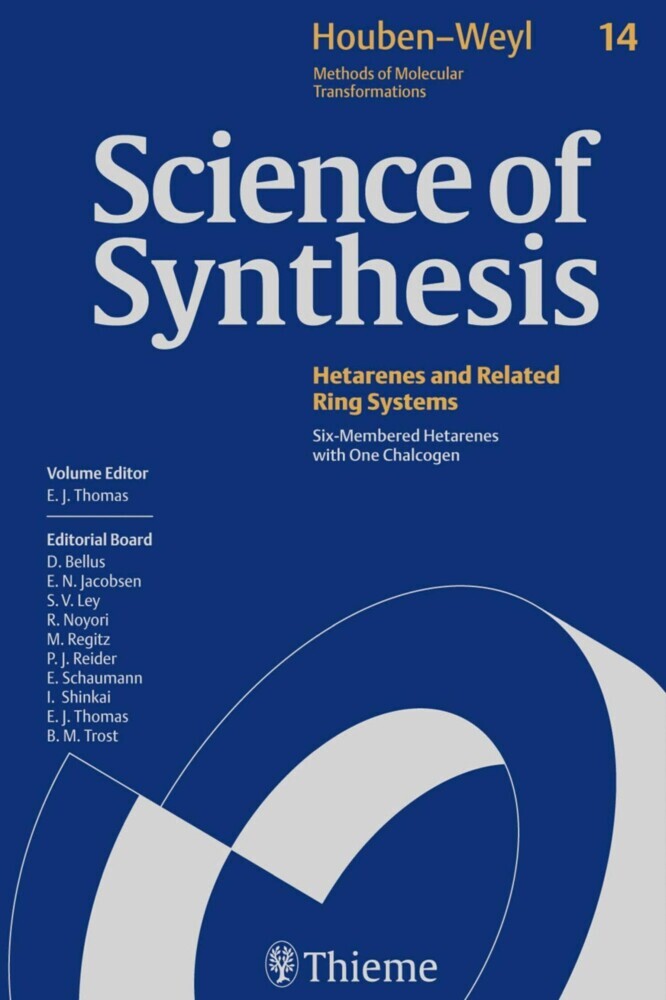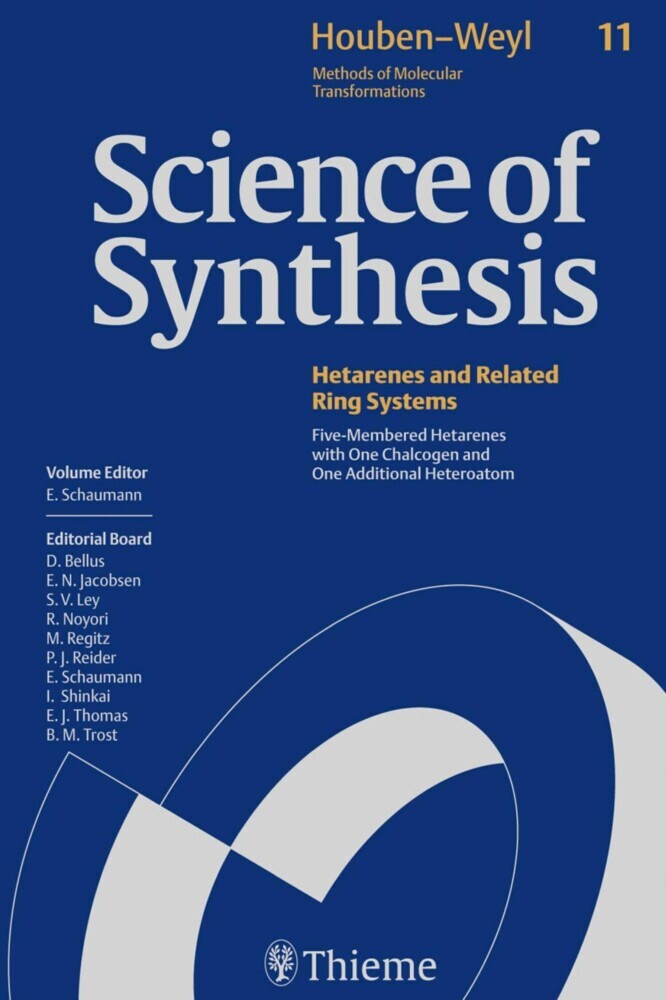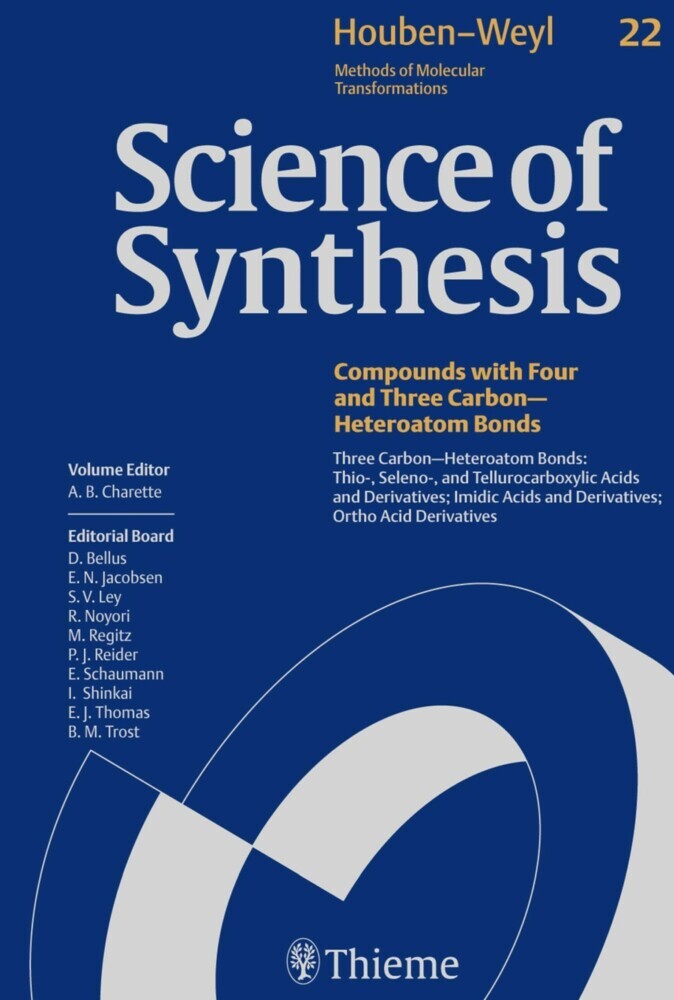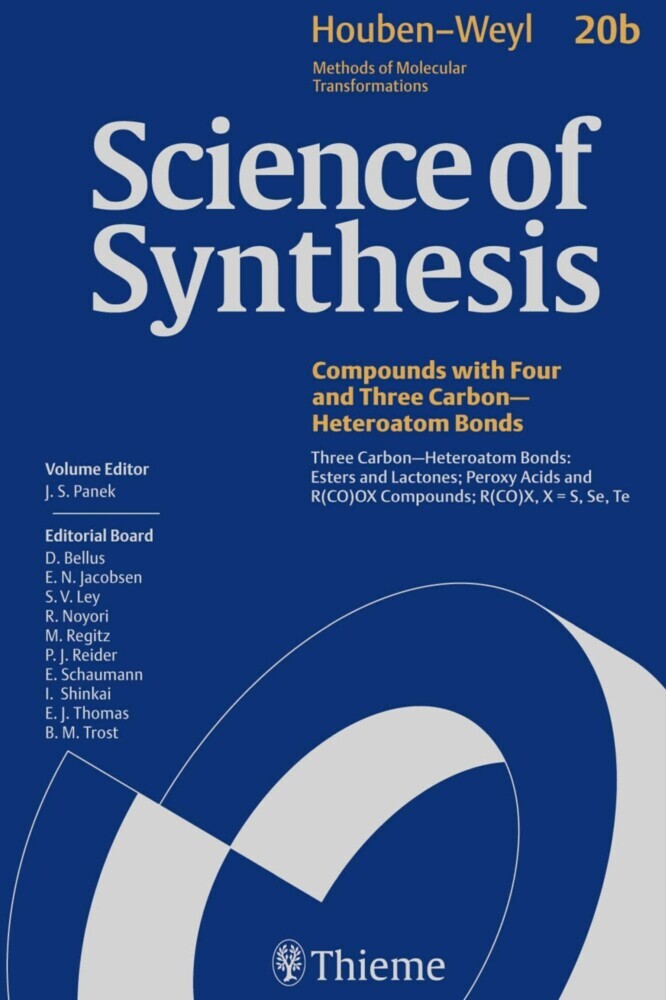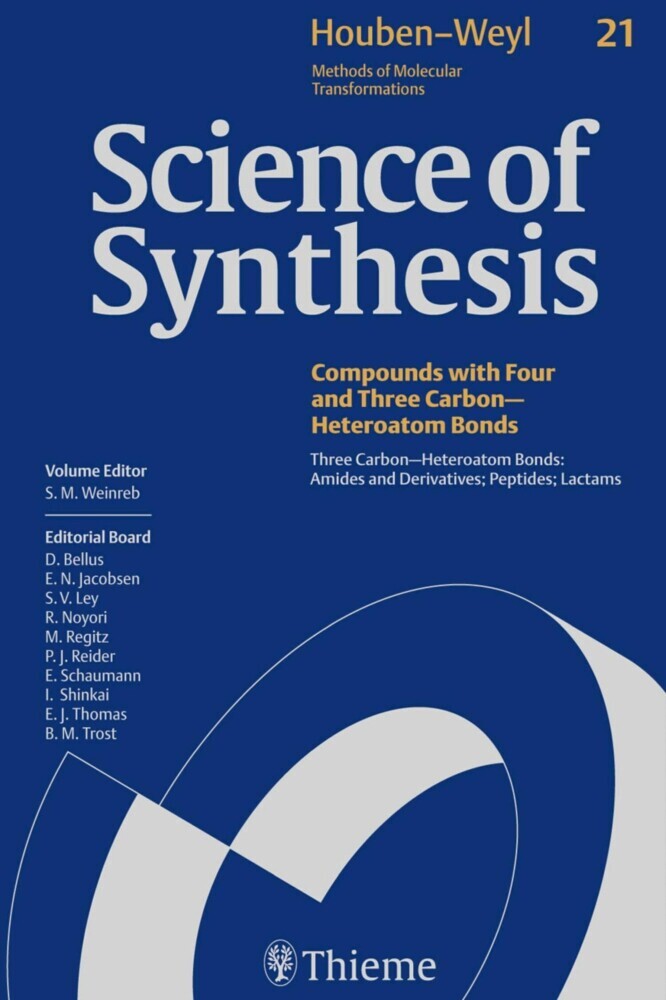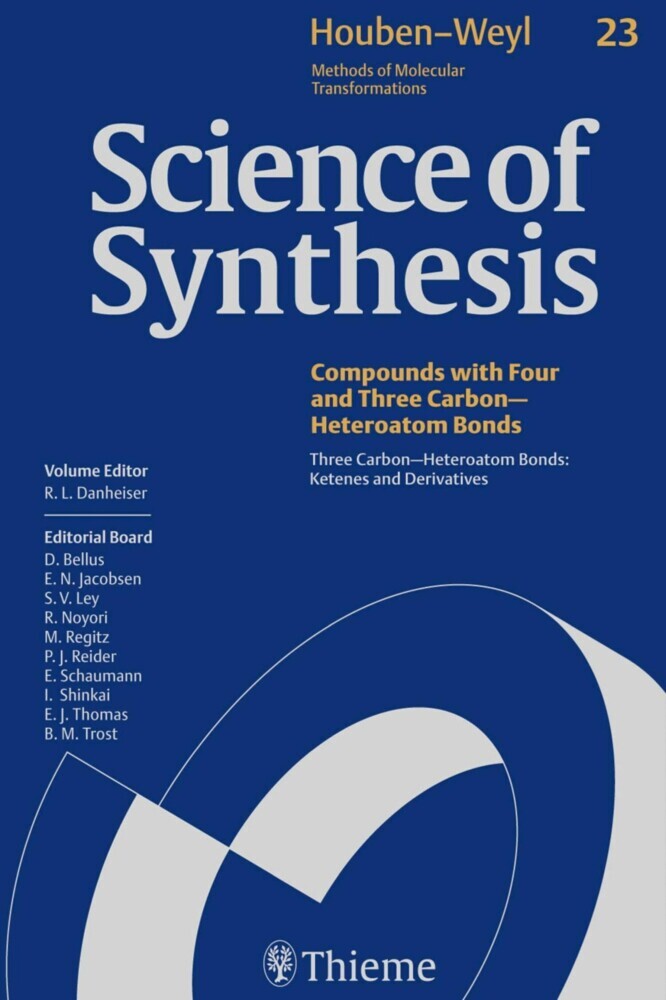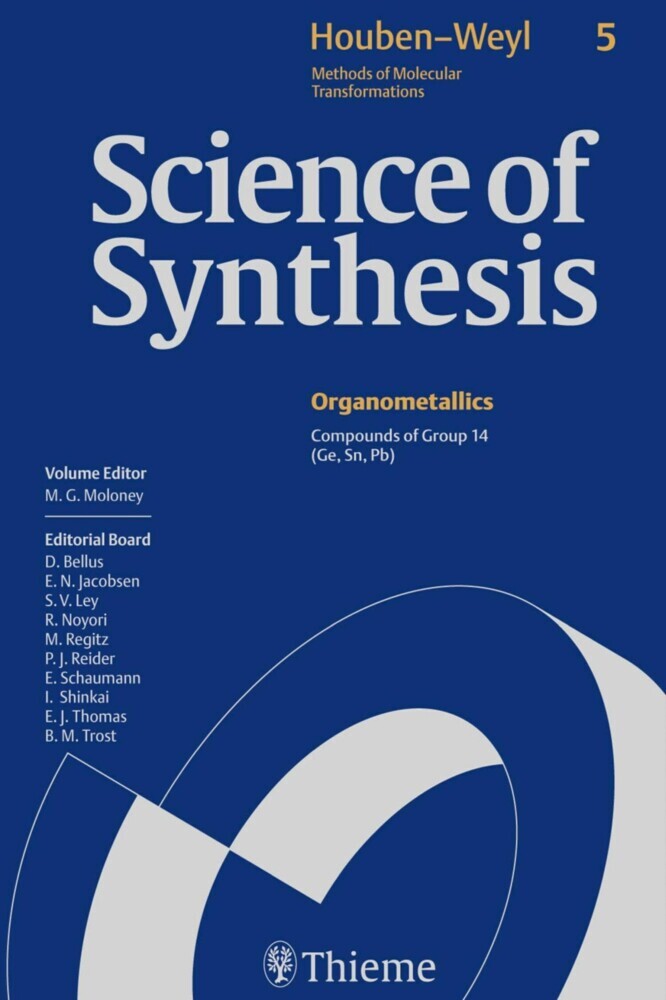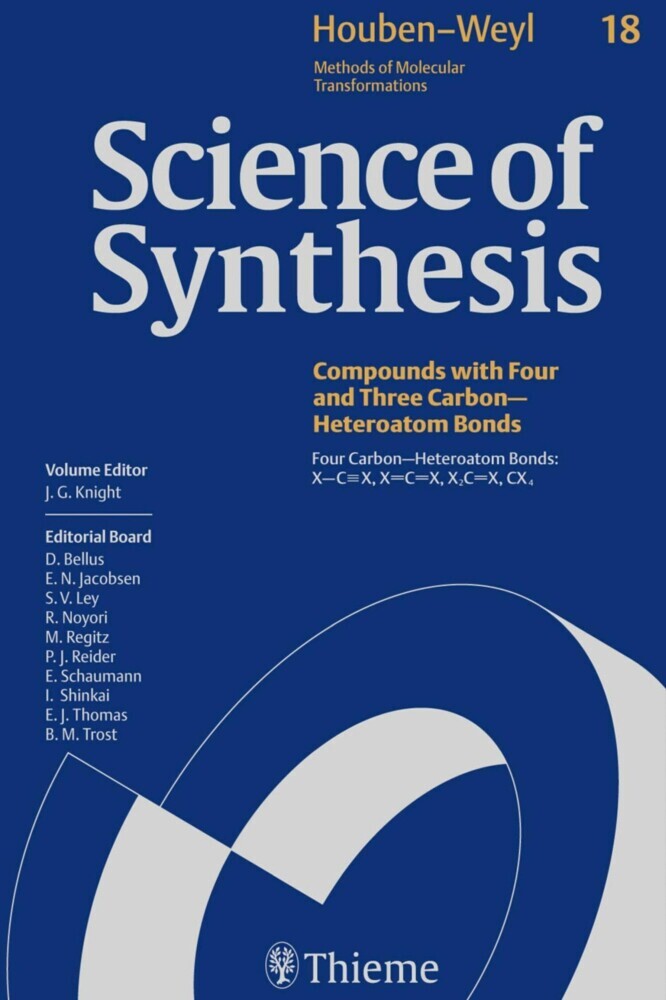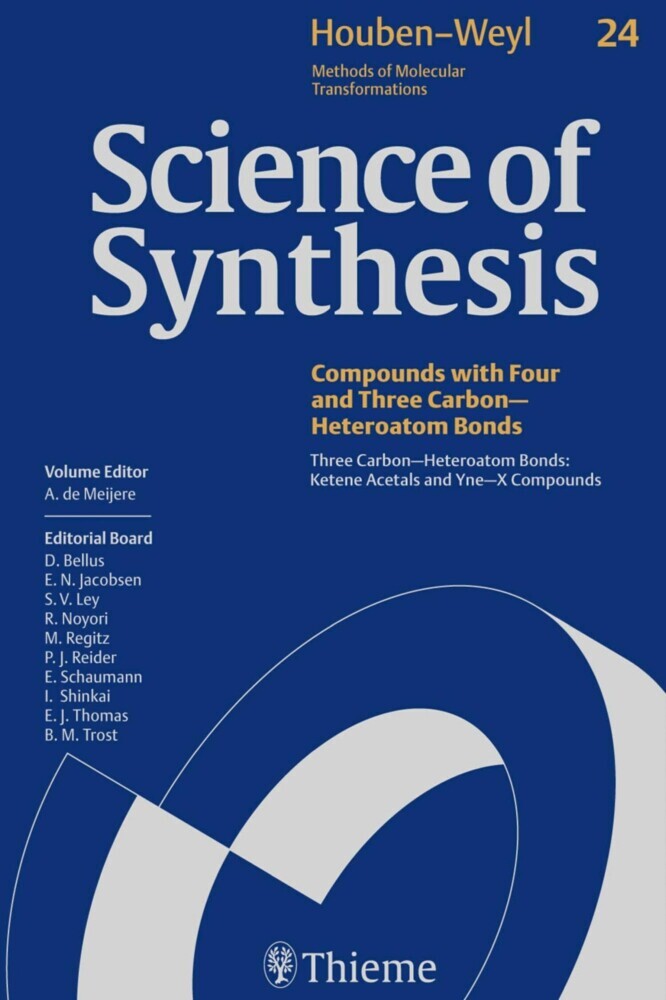Science of Synthesis: Cross Coupling and Heck-Type Reactions Vol. 1
Science of Synthesis: Cross Coupling and Heck-Type Reactions Vol. 1
In Science of Synthesis: Cross Coupling and Heck-Type Reactions, expert authors present and discuss the best and most reliable methods currently available for the formation of new carbon-carbon and carbon-heteroatom bonds using these reactions, highlighted with representative experimental procedures. Together, the three volumes of Cross Coupling and Heck-Type Reactions provide an extensive overview of the current state of the art in this field of central importance in modern chemistry, and are an invaluable resource for the practicing synthetic organic chemist.
This volume covers carbon-carbon bond formation, and, as a widely acknowledged recognition of the importance of the transformations described herein, virtually all of the chemistry described in this volume has achieved 'Name Reaction' stature, and the chapters are organized accordingly. Thus, Suzuki-Miyaura reactions, Hiyama cross coupling, Stille coupling, Negishi coupling, and finally Kumada coupling are discussed in sequence, with a particular emphasis on breadth of scope rather than detailed minutiae.
This volume is part of a 3-volume set:
Cross Coupling and Heck-Type Reactions Workbench Edition
General information about Science of Synthesis
1;Science of Synthesis: Cross Coupling and Heck-Type Reactions 1 - C-C Cross Coupling Using Organometallic Partners;1 1.1;Title page;3 1.2;Imprint;5 1.3;Preface;6 1.4;Volume Editor's Preface;8 1.5;Cross Coupling and Heck-Type Reactions Volumes;10 1.6;Abstracts;12 1.7;Overview;22 1.8;Table of Contents;24 1.9;Introduction;46 1.10;1.1 Boron;54 1.10.1;1.1.1 Arylboron Cross-Coupling Reactions;54 1.10.1.1;1.1.1.1 Arylboronic Acid Cross-Coupling Reactions;54 1.10.1.1.1;1.1.1.1.1 Traditional Cross-Coupling Reactions;54 1.10.1.1.1.1;1.1.1.1.1.1 With C(sp2)--X Electrophiles (X = Leaving Group);55 1.10.1.1.1.1.1;1.1.1.1.1.1.1 Aryl, Hetaryl, and Vinyl Halide Electrophiles;55 1.10.1.1.1.1.1.1;1.1.1.1.1.1.1.1 Aryl/Hetaryl Bromide and Iodide Electrophiles;55 1.10.1.1.1.1.1.1.1;1.1.1.1.1.1.1.1.1 "Ligandless" (Phosphine- and Carbene-Free) Catalyst Systems;55 1.10.1.1.1.1.1.1.2;1.1.1.1.1.1.1.1.2 Palladium/Amine Catalyst Systems;61 1.10.1.1.1.1.1.2;1.1.1.1.1.1.1.2 Aryl, Hetaryl, and Vinyl Chloride Electrophiles;67 1.10.1.1.1.1.1.3;1.1.1.1.1.1.1.3 Aryl/Hetaryl Fluoride Electrophiles;95 1.10.1.1.1.1.2;1.1.1.1.1.1.2 Aryl--, Hetaryl--, and Vinyl--Oxygen Electrophiles;100 1.10.1.1.1.1.2.1;1.1.1.1.1.1.2.1 Aryl Trifluoromethanesulfonate/Nonafluorobutanesulfonate Electrophiles;100 1.10.1.1.1.1.2.2;1.1.1.1.1.1.2.2 Hetaryl Trifluoromethanesulfonate/Nonafluorobutanesulfonate Electrophiles;105 1.10.1.1.1.1.2.3;1.1.1.1.1.1.2.3 Vinyl Trifluoromethanesulfonate Electrophiles;107 1.10.1.1.1.1.2.4;1.1.1.1.1.1.2.4 Arenesulfonate Electrophiles;113 1.10.1.1.1.1.2.5;1.1.1.1.1.1.2.5 Vinyl 4-Toluenesulfonate Electrophiles;118 1.10.1.1.1.1.2.6;1.1.1.1.1.1.2.6 Methanesulfonate Electrophiles;123 1.10.1.1.1.1.2.7;1.1.1.1.1.1.2.7 Other Sulfonic Acid Based Electrophiles;126 1.10.1.1.1.1.2.8;1.1.1.1.1.1.2.8 Ester Electrophiles;130 1.10.1.1.1.1.2.9;1.1.1.1.1.1.2.9 Carbamate and Carbonate Electrophiles;133 1.10.1.1.1.1.2.10;1.1.1.1.1.1.2.10 Phenol Electrophiles via Phosphonium Activation;133 1.10.1.1.1.1.2.11;1.1.1.1.1.1.2.11 Aryl Phosphate Electrophiles;139 1.10.1.1.1.1.2.12;1.1.1.1.1.1.2.12 Enol Phosphate Electrophiles;140 1.10.1.1.1.1.3;1.1.1.1.1.1.3 Aryl-- and Hetaryl--Nitrogen Electrophiles;146 1.10.1.1.1.1.3.1;1.1.1.1.1.1.3.1 Diazonium Electrophiles;147 1.10.1.1.1.1.3.1.1;1.1.1.1.1.1.3.1.1 In Situ Generated Diazonium Electrophiles;150 1.10.1.1.1.1.3.2;1.1.1.1.1.1.3.2 Triazene Electrophiles;152 1.10.1.1.1.1.3.3;1.1.1.1.1.1.3.3 Ammonium Electrophiles;153 1.10.1.1.1.1.3.4;1.1.1.1.1.1.3.4 Azole Electrophiles;154 1.10.1.1.1.1.4;1.1.1.1.1.1.4 Aryl-- and Hetaryl--Sulfur Electrophiles;155 1.10.1.1.1.1.4.1;1.1.1.1.1.1.4.1 Arenesulfonyl Chloride Electrophiles;156 1.10.1.1.1.1.4.2;1.1.1.1.1.1.4.2 p-Deficient Heteroaromatic Thioether Electrophiles;156 1.10.1.1.1.1.5;1.1.1.1.1.1.5 Carboxylic Acid Derivative Electrophiles;158 1.10.1.1.1.1.5.1;1.1.1.1.1.1.5.1 Carboxylic Acid Chloride Electrophiles;158 1.10.1.1.1.1.5.2;1.1.1.1.1.1.5.2 Carboxylic Acid Thioester Electrophiles;159 1.10.1.1.1.1.5.3;1.1.1.1.1.1.5.3 Carboxylic Acid Ester and Anhydride Electrophiles;160 1.10.1.1.1.2;1.1.1.1.1.2 C(sp3)--X Electrophiles (X = Leaving Group);164 1.10.1.1.1.2.1;1.1.1.1.1.2.1 Unactivated C(sp3)--X Electrophiles with ß-Hydrogen Atoms;164 1.10.1.1.1.2.2;1.1.1.1.1.2.2 Activated C(sp3)--X Electrophiles without ß-Hydrogen Atoms;169 1.10.1.1.1.2.2.1;1.1.1.1.1.2.2.1 Benzylic--X Electrophiles;169 1.10.1.1.1.2.2.2;1.1.1.1.1.2.2.2 Allylic--X Electrophiles;172 1.10.1.1.1.2.2.3;1.1.1.1.1.2.2.3 a-X Ketones;174 1.10.1.1.1.3;1.1.1.1.1.3 C(sp)--X Electrophiles;175 1.10.1.1.1.3.1;1.1.1.1.1.3.1 Alkynyl Halide Electrophiles;175 1.10.1.1.1.3.2;1.1.1.1.1.3.2 Alkynyl Sulfide Electrophiles;177 1.10.1.1.1.3.3;1.1.1.1.1.3.3 Benzyl Thiocyanate Electrophiles;177 1.10.1.1.2;1.1.1.1.2 Oxidative Cross-Coupling Reactions;178 1.10.1.1.2.1;1.1.1.1.2.1 Diazo Coupling Partners;178 1.10.1.1.2.1.1;1.1.1.1.2.1.1 a-Diazocarbonyl Compounds;179 1.10.1.1.2.1.2;1.1.1.1.2.1.2 N-Tosylhydrazones
Molander, Gary A.
| ISBN | 9783131790514 |
|---|---|
| Artikelnummer | 9783131790514 |
| Medientyp | E-Book - PDF |
| Copyrightjahr | 2014 |
| Verlag | Georg Thieme Verlag KG |
| Umfang | 1052 Seiten |
| Sprache | Englisch |
| Kopierschutz | Digitales Wasserzeichen |

